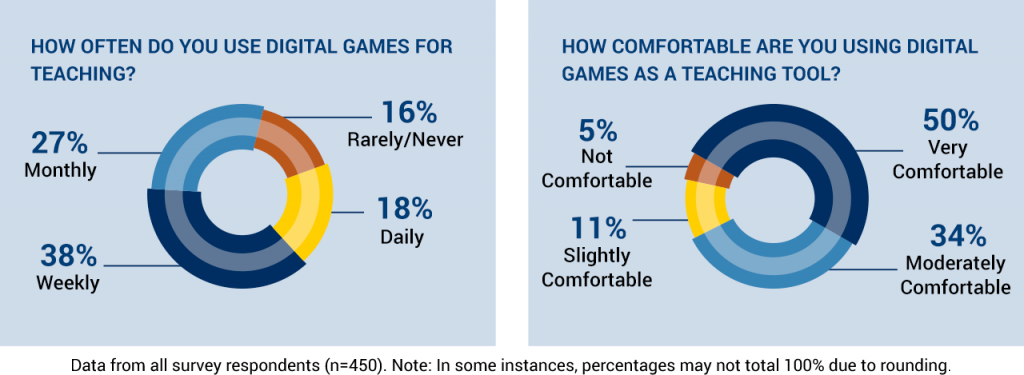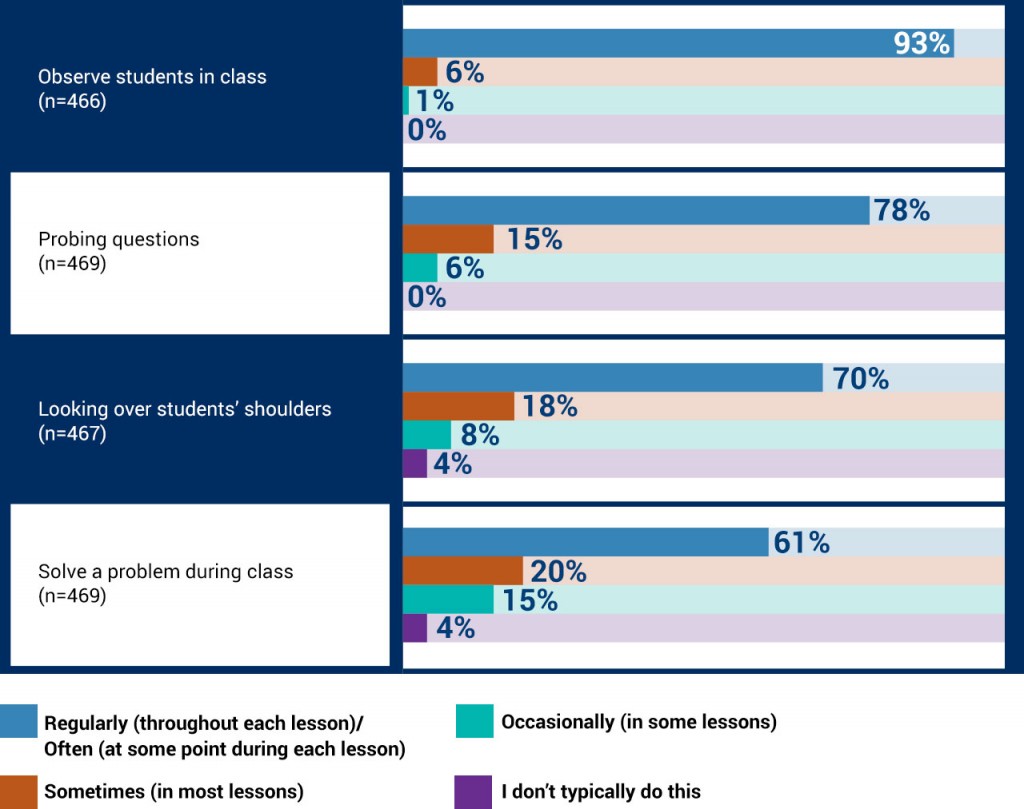
A-GAMES has the released the first part of a multi-part look at the use of digital games to gauge student learning.
A major new report offers some important insights into when and why teachers use digital games to assess student understanding of lessons.
The report, from A-GAMES (which is easier to remember than Analyzing Games for Assessment in Math, ELA/Social Studies, and Science), is the first part of a major research effort and collaboration between the University of Michigan and New York University. A-GAMES was organized to study how teachers actually use digital games in their teaching to support formative assessment.
-
Read the full report and dive deeper at the A-GAMES site at the University of Michigan
“For game developers, it is important to recognize just how important formative assessment is in teaching, and that video games can play a central role in that important practice,” Barry Fishman, professor of Learning Technologies at the University of Michigan and head of the survey, said.
Developers might also pay attention to the four “types” of teachers that emerged from our data through a technique called cluster analysis. It’s always important to keep an eye on one’s audience, and the largest groups of teachers were either users of games who were not super-enthusiastic about them, and teachers who don’t use games that often and were less likely than teachers in other groups to think games are effective for any purpose. Greater clarity about learning and assessment features of games may communicate better to these groups of teachers.
Barry Fishman, A-GAMES
Formative assessment is one of those terms that gets thrown around a lot when discussing the use of games in the classroom. In general, it’s the various ways that teachers check for student progress or understanding during instruction. The overall goal of formative assessment is to shape instruction or measure progress through instruction.
The project surveyed nearly 500 teachers earlier this year and the results were published, along with a ton of additional material, today at the University of Michigan site.

The researchers found that the use of digital games often connected closely to the way in which the teacher thought about formative assessment.
“Teachers who use digital games more frequently for formative assessment are more likely to say they do not face any barriers to conducting formative assessment and less likely to say they lack training or preparation for making use of information from formative assessment,” the report reads. “Teachers who use digital games weekly or more often to make instructional decisions are also less likely to report that they lack time to administer formative assessment or to name a lack of materials or resources provided by their curriculum for formative assessment as barriers to formative assessment.”
Or put a different way, teachers who know how to gauge student progress throughout a lesson and who faced fewer barriers to implementing a system to track student understanding were far more likely to use digital games.
“What was most interesting us was that teachers who explicitly used games to support their formative assessment practice were also using formative assessment more frequently and in a greater variety of ways,” Fishman said. “Also, teachers who were frequently users of games were more likely to report that they did not face any barriers to conducting formative assessment, compared to teachers who were not using games frequently for formative assessment.”

The report also highlighted what are the continuing challenges that keep teachers from using games in the classroom. The teachers reported the cost of game software (55%), and lack of technology resources to support the use of games (52%) as the primary barriers to implementing games.
Fishman also said teachers cited a lack of time to “fit” games into the curriculum (52%), and not knowing where to find quality games (48%) or games that fit the curriculum (47%) as other problems.
Having released the survey, Fishman will now take a closer look at a handful of classrooms to conduct case studies to explore what these broader numbers really look like in the classroom.
“What is interesting about our case studies is that they don’t focus on individual teachers, or on particular games,” Fishman said. “What we do in the case studies is focus on how a particular features that is commonly used in games — such as points, scores, or stars — “plays out” in classroom instruction. How do teachers make sense of that information? What could game designers do to improve the usability of that feature for formative assessment and instruction? We will report on 7 “major” features and 4 less prominent features.”
